Glass
In our Glass Category, we present a wide selection of Venetian and facon de Venise glass from the 16th and 17th centuries. The middle of this period might be regarded as the ‘golden age’ of early glass as ‘art objects’. Such pieces were expensive but were much sought after by the elite of Europe.
During the second half of the 15th century, the Venetians successfully perfected recipes to produce clear Cristallo glass, thereby imitating natural rock crystal. This achievement helped to establish Venice as a Renaissance super-power.
Venetian glass from the early 16h century is typically decorated with gilding and enamels, but this soon gave way to new decorative techniques such as filigrana and diamond point engraving. The Venetians fought hard to maintain their monopoly, but inevitably over time glassworkers and their techniques and materials started to move around Europe. Other glassmaking centres making facon de Venise glass, meaning glass in the Venetian style but made elsewhere, became established throughout Europe. Sometimes these centres were built on an existing glassmaking site, while others were newly established.
Important glassmaking centres became established in the Low Countries, for example Antwerp, Liege and Amsterdam. In Catalonia and elsewhere in Spain a strong existing glassmaking industry adopted Venetian techniques to produce distinctive styles of facon de Venise glass. Other centres were in Austria, France, England, Germany and Bohemia.
During the second half of the 17th century experimentation had been underway in England, the Low Countries and Bohemia to find new recipes to produce glassware containing up to 30% lead oxide. The success of these experiments came to revolutionize the glass industry. The new lead glass was clearer and heavier than earlier glass and was easily capable of being engraved. Perhaps most importantly it was capable of mass production. By the early 18th century these new glasswares came to dominate much of the European glass industry.
-
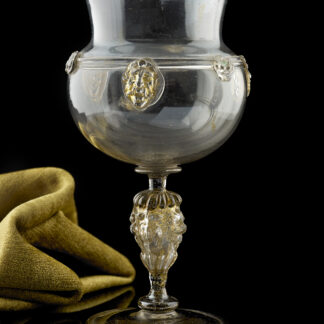
Gilt Facon de Venise Goblet with a thistle shaped bowl, Antwerp or Liege, c.1580-1590
£5,000.00 -

A Ruby Glass Bowl With Silver Gilt Mounts c.1690
£5,950.00 -

A Small Glass Bottle decorated with white Filigree; Venice or Catalonia, 2nd half of the 16th century.
-
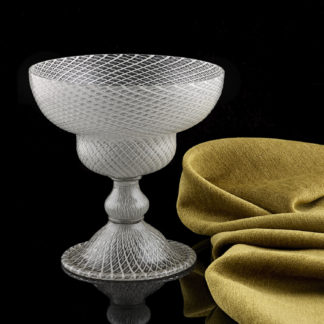
A Large Reticello Glass Goblet; Venice, early 17th century
-
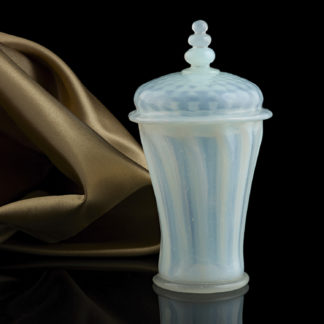
A Girasol Glass Beaker with cover; Venice, late 16th /early 17th century
-
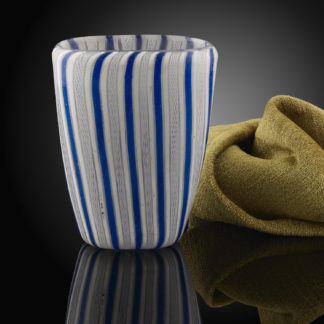
A Glass Beaker with Blue and White Fili and Retortoli; late 17th century.
-
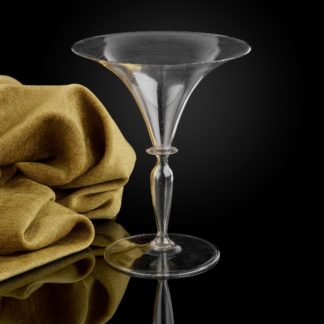
A fine Venetian wine glass, second half of the 16th century
£7,000.00 -
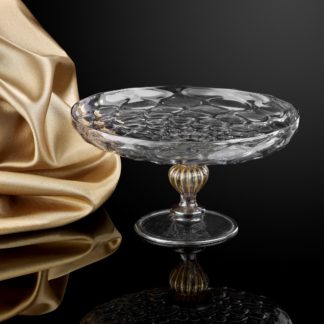
A fine and rare 16th century Facon de Venise Tazza
£24,000.00 -
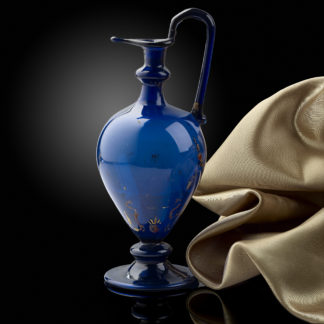
A Very Rare blue tinted glass Ewer; Venice, for the Austrian Market
£14,000.00 -
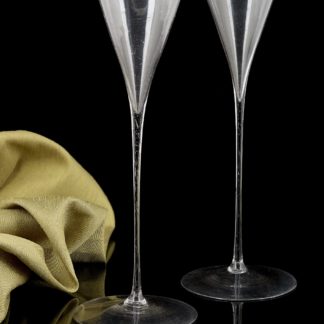
Antique Toasting Glasses (Pair)
£2,200.00 -
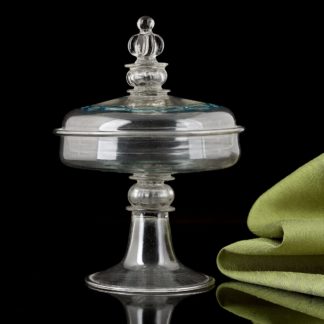
Rare Venetian Tazza 17th Century with Domed Cover
£10,000.00 -

A Very Rare Venetian low footed Glass Bowl
£15,000.00
